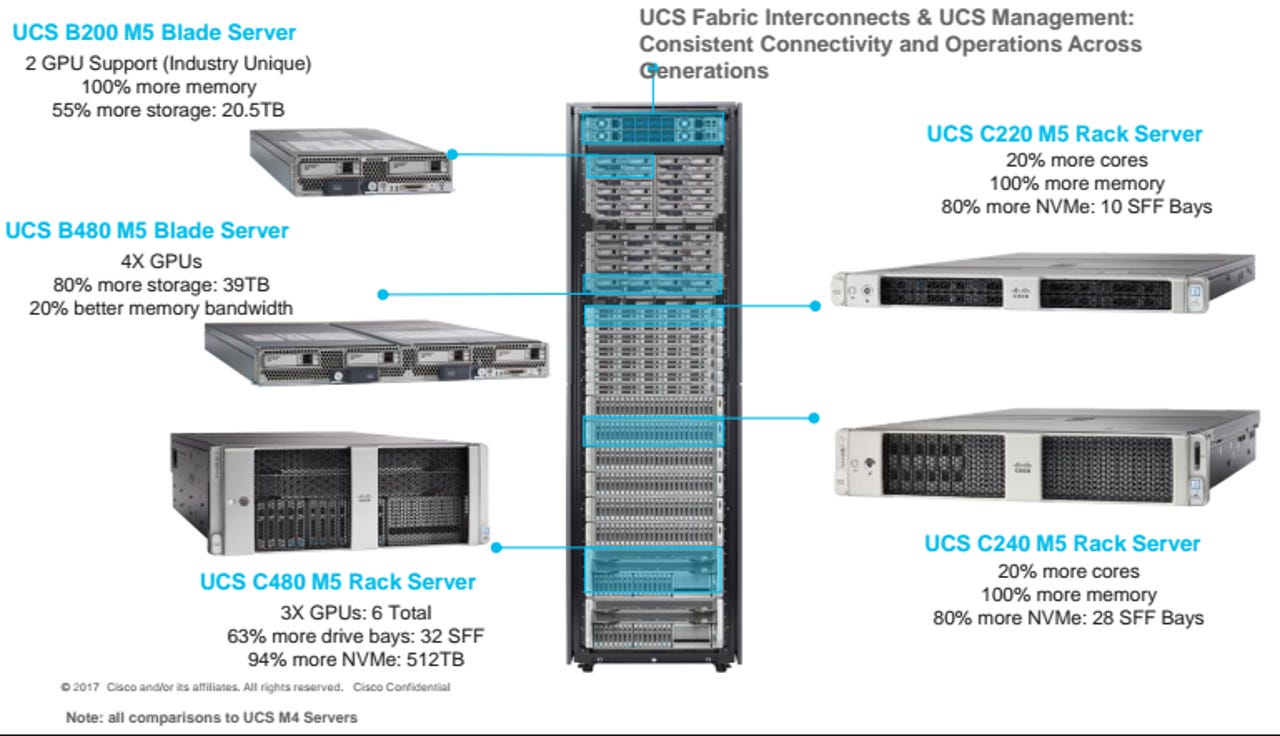Cisco updates UCS servers, software for data-intensive workloads


Cisco on Tuesday is announcing updates to the servers and software that comprise its Unified Computing System (UCS), catering to customers that need to run demanding applications while adhering to tight budgets.
"Machine learning and deep learning applications are becoming if not prevalent in the data center, then certainly top of mind for our customers," Jim Leach, director of platform strategy at Cisco for UCS, said of the trends driving Cisco's innovations. Meawnwhile, he added, customers have said "they needed more storage, more capability, more modularity so they could apply storage locally."
To accommodate those demands, Cisco's new servers are its highest performing ever. Built on the new Intel Xeon scalable processors, UCS M5 servers offer up to double the memory capacity of previous systems and up to 86 percent higher performance.
More specifically, the fifth-generation UCS servers include two new blade servers and three new rack servers.
"The idea is we can bring customers these types of powerful new machines in a completely plug-and-play environment," said Todd Brannon, director of product marketing at Cisco for Unified Computing. "They just appear as new, faster resources in a pool of resources you've created with UCS."
The M5 generation of servers include the Cisco UCS B200 M5 Blade Server, which leads the industry in GPU density with up to two GPUs, as well as the B480 M5 Blade Server for workloads ranging from memory-intensive enterprise applications to distributed database virtualized workloads.
The C220 M5 Rack Server is a high-density, two-socket rack server, while the C240 M5 Rack Server is a storage and I/O optimized enterprise-class rack server for big data analytics, software-defined storage and bare metal applications. Lastly, the C480 M5 Rack Server features an innovative modular architecture for flexible technology refreshes. GPU support has tripled -- with up to six supported -- as has disk capacity, which now supports 32 drives.
Additionally, Cisco is extending its infrastructure automation and optimization capabilities with updated software: Cisco UCS Director 6.5 and Workload Optimization Manager, an OEM agreement with Turbonomic.
The updated software should help organizations that face workloads which are increasing at a far faster pace than IT budgets, said Joann Starke, senior manager for Cisco Data Center Solutions.
"You have to bring in automation because we've reached a point where humans can no longer handle the complexity and volume hitting the data center these days," she said. "Automation has become mandatory, it's no longer optional."
UCS Director 6.5 extends automation capabilities beyond infrastructure by automating native PowerShell functions, virtual machine mobility across vCenter data centers and support for VMware VMRC console.
Meanwhile, Workload Optimization Manager uses intent-based analytics to continuously balance workload demand, infrastructure supply and utilization, across on premise and multi-cloud environments. The UCS platform allows the software to go through very deep levels of inspection, enabling customers to increase workload density by at least 25 percent, Starke said. It also enables customers to plan ahead, accurately assessing how many M5 servers they would need to for optimal performance or what workloads should go to the cloud.